During World War II, roughly 280,000 men and women from Louisiana served in the Armed Forces. There were over 30 military installations in the state, in addition to more than 40 prisoner of war camps. Louisiana industry supplied the Allied war machine with vital materials such as oil, synthetic rubber, and ships of all sizes. Civilians collected scraps, grew Victory gardens, and bought war bonds to build aircraft. Louisianans were all in together, and this series highlights when the Pelican State went to war.
Lucien Laborde was born in the small south Louisiana town of Vinton, just a few miles from the Texas border. His family moved north to Marksville, and it was there in the central part of the state Laborde grew up. Like many Louisianans, Laborde made his way to Baton Rouge to attend Louisiana State University where he studied agriculture and then economics. Laborde joined the ROTC at LSU, where Troy Middleton, who was later to command the VIII Corps in Europe, was commandant of Cadets. After graduation Laborde was working on Federal flood control surveys in Arkansas when he was called to active duty in January 1942.
After returning home, Laborde reported for duty at nearby Camp Beauregard, before beginning months of training and time as an instructor. After the campaign in North Africa, there was a need for intelligence personnel so Laborde volunteered for duty in Europe. Before departing the United States, he was diverted to the 29th Infantry Division (29th ID). Unbeknownst to Laborde at the time, he was on course to participate in the Allied invasion of Europe. In February 1943, Laborde was aboard a freighter in a convoy to England. The ill-fated convoy was hunted by German U-Boats, and the convoy suffered tremendous losses, including the SS Dorchester. The Dorchester, a loaded troop ship, sank with the greatest single loss of American personnel in a convoy. The sinking became well-known for the four chaplains who sacrificed their own lives to save others.
Laborde made the crossing safely, and arrived in England to join the 29th ID. There he made his way through the organization to become the regimental adjutant for the 115th Infantry Regiment (115th IR), under the command of Colonel Eugene Slappy. As part of the regimental headquarters, Laborde was privy to top secret information on the upcoming landings in France.
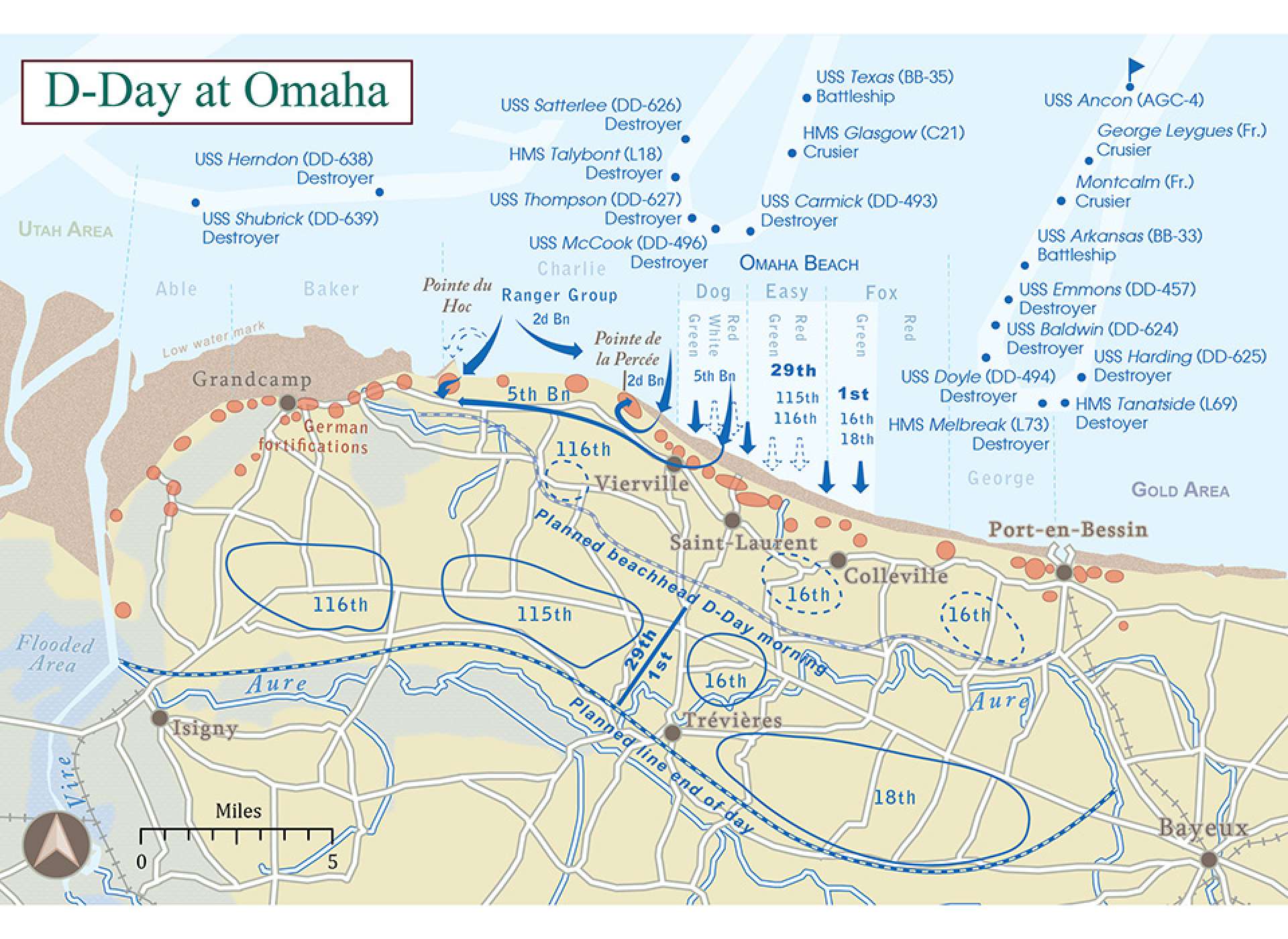
This map shows the planned landing locations and first day objectives for the landings at Omaha Beach. The National WWII Museum.
According to his oral history in the Museum’s collection, on D-Day, June 6, 1944, Laborde’s unit landed later in the morning on Fox Green Beach, diverted from their planned landing beach, Easy Green. By mid-morning the fighting on the beach was still fierce, and Laborde wasn’t off the beach until mid-afternoon. After making their way up the 90-foot bluff near what is now the Normandy American Cemetery, the Regimental Headquarters set up their first command post outside of Saint-Laurent.
-

Laborde kept this British one-pound bank note that was signed by men on his landing craft. The National WWII Museum.
-

The back side shows the signatures of men he landed with. The National WWII Museum.
-

The Confederate ten dollar bill was carried by Laborde’s great-great-grandfather in the Civil War, and then his great-grandfather in World War I. Laborde carried it throughout World War II. The National WWII Museum.
Due to the high number of casualties sustained by the 116th Infantry Regiment, the 115th IR was rerouted to take some of the 116th’s objectives. They turned towards Vierville to begin clearing the area of German forces. Within days, the regiment’s three battalion commanders had either been killed or relieved due to “combat exhaustion.” Laborde was moved from his position as regimental adjutant to assist the new commander of the 3rd Battalion.
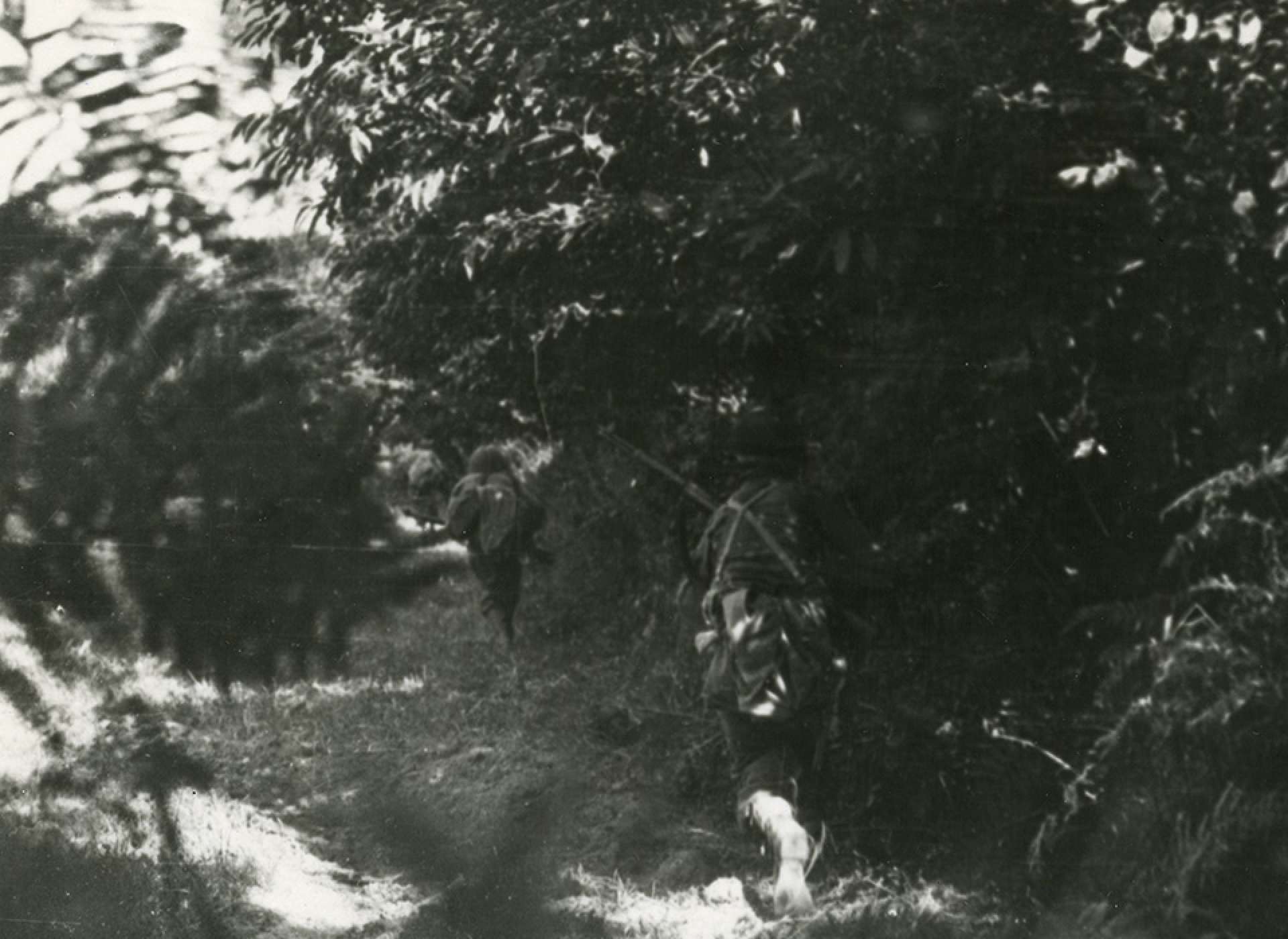
Dense hedgerows created difficult fighting terrain as the Allies moved into Normandy. The National WWII Museum.
As the 115th fought through the hedgerows they faced well-concealed German machine guns.As Laborde recalled: “The Germans had all that time to prepare holes through there where they could have machine guns to control that whole four-acre field in front of them before the next hedgerow, and then, the same thing on down, but we had to go through that open field to get to them, and artillery was a big help. Mortars were a big help, but you had to have people to control it. That kept on until towards Saint-Lo, which was our big objective.” The 115th became instrumental in taking Saint-Lo, and on July 17-18 they began the main effort to break into the city, entering late in the day on the 18th.
Laborde served with the 115th for the duration of the war. After Saint-Lo, they participated in Operation COBRA (the breakout in Normandy), the Rhineland Campaign, and then the Central European Campaign. At the war’s end, Laborde was with the 115th in Bremen. The Regiment remained in the Bremen area until just after Christmas in 1945, when the last of the men, including Laborde, were released to return home. By the end of the war Laborde was the operations officer for the 29th Infantry Division. As the Division sailed home in December, Laborde and other division officers flew back to the United States to meet the troopships in New York.
After meeting the Division in New York, Laborde took a troop train to Camp Shelby, Mississippi, where he was discharged from the army, having reached the rank of Lieutenant Colonel. He returned home to Louisiana and established Hamburg Mills farm where he became a plant breeder and developed a commercial cattle operation. Lucien Laborde passed away in 2015 at the age of 97.
Lucien Laborde and the Laborde family have a special place within the Museum. . On the second floor of the Museum’s US Freedom Pavilion: The Boeing Center, is the Laborde Services Gallery, made possible through gifts in honor of the Laborde brothers Alden, John, Lucien, and C.E.. The Laborde Services Gallery pays homage to the 16 million men and women who served in the US Armed Forces in World War II. There each branch of the military is represented through a display of uniforms and stories from each one.
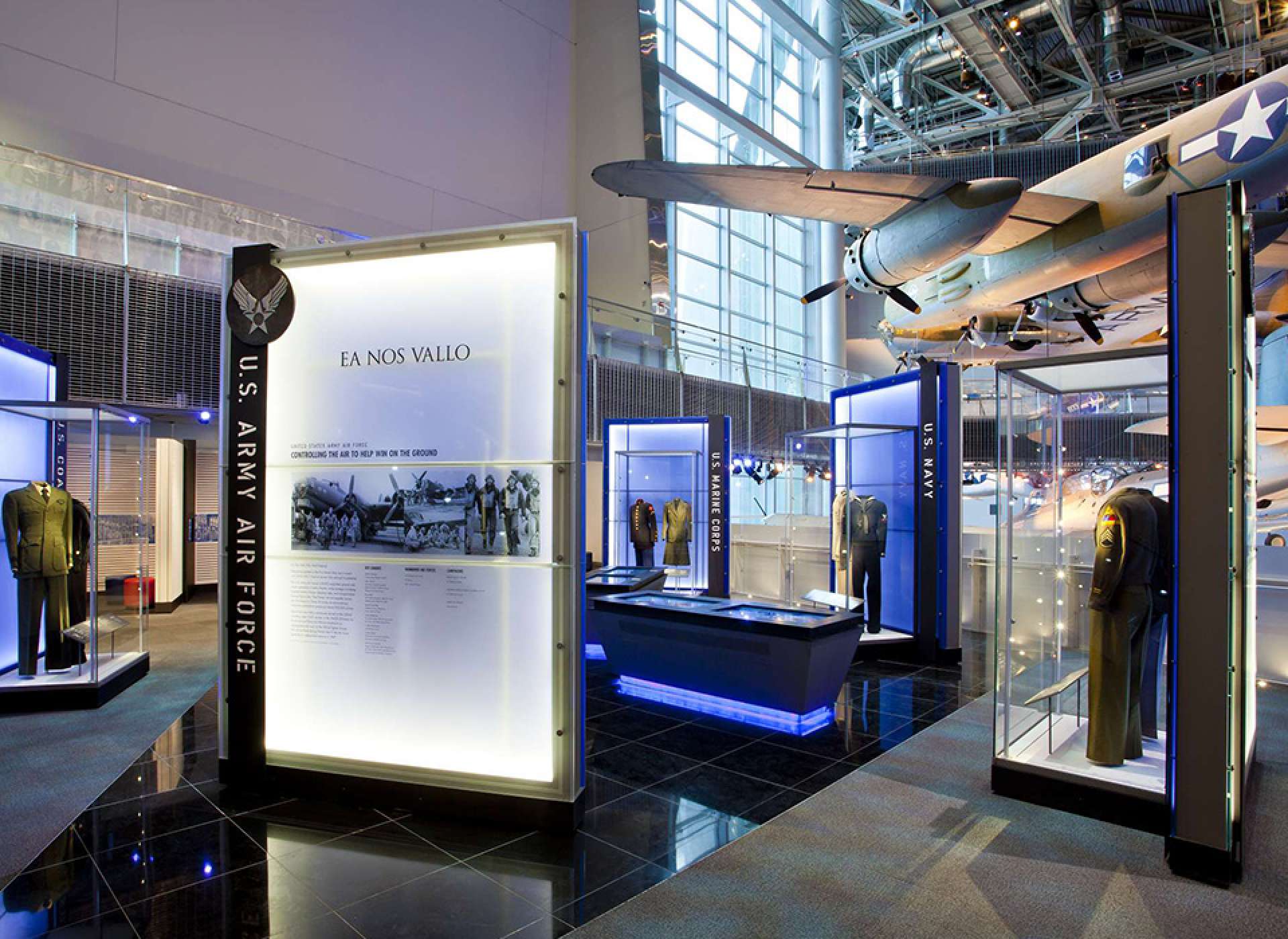
The Laborde Services Gallery in the US Freedom Pavilion at The National WWII Museum.
In 2013, Laborde was interviewed by Museum Historian Tommy Lofton. His oral history is available online in the Museum’s Digital Collection, as well the oral history of his brother John, who served in the Pacific theaterIn 2017, Laborde’s dress uniform was featured in the Museum’s travelling exhibit The Pelican State Goes to War. Also a part of the exhibit were a British one-pound note signed by members of his landing craft on June 6, the Confederate ten dollar bill Laborde carried throughout the war, and Laborde’s copy of a telegram notifying his division of the War’s end. In 2019, Laborde’s oral history was featured in the book “Everything We Have” D-Day, by Museum President and CEO Emeritus Dr. Gordon H. “Nick” Mueller.
Kali Martin
Kali Martin is a former Research Historian of The National WWII Museum's Jenny Craig Institute for the Study of War and Democracy.
Cite this article:
MLA Citation:
APA Citation:
Chicago Style Citation:
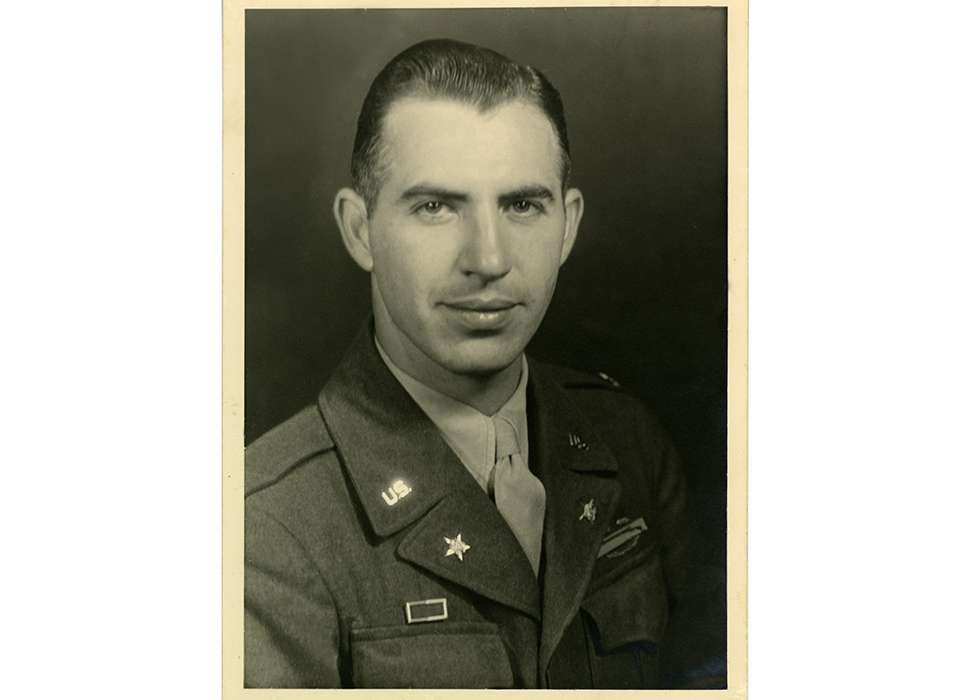
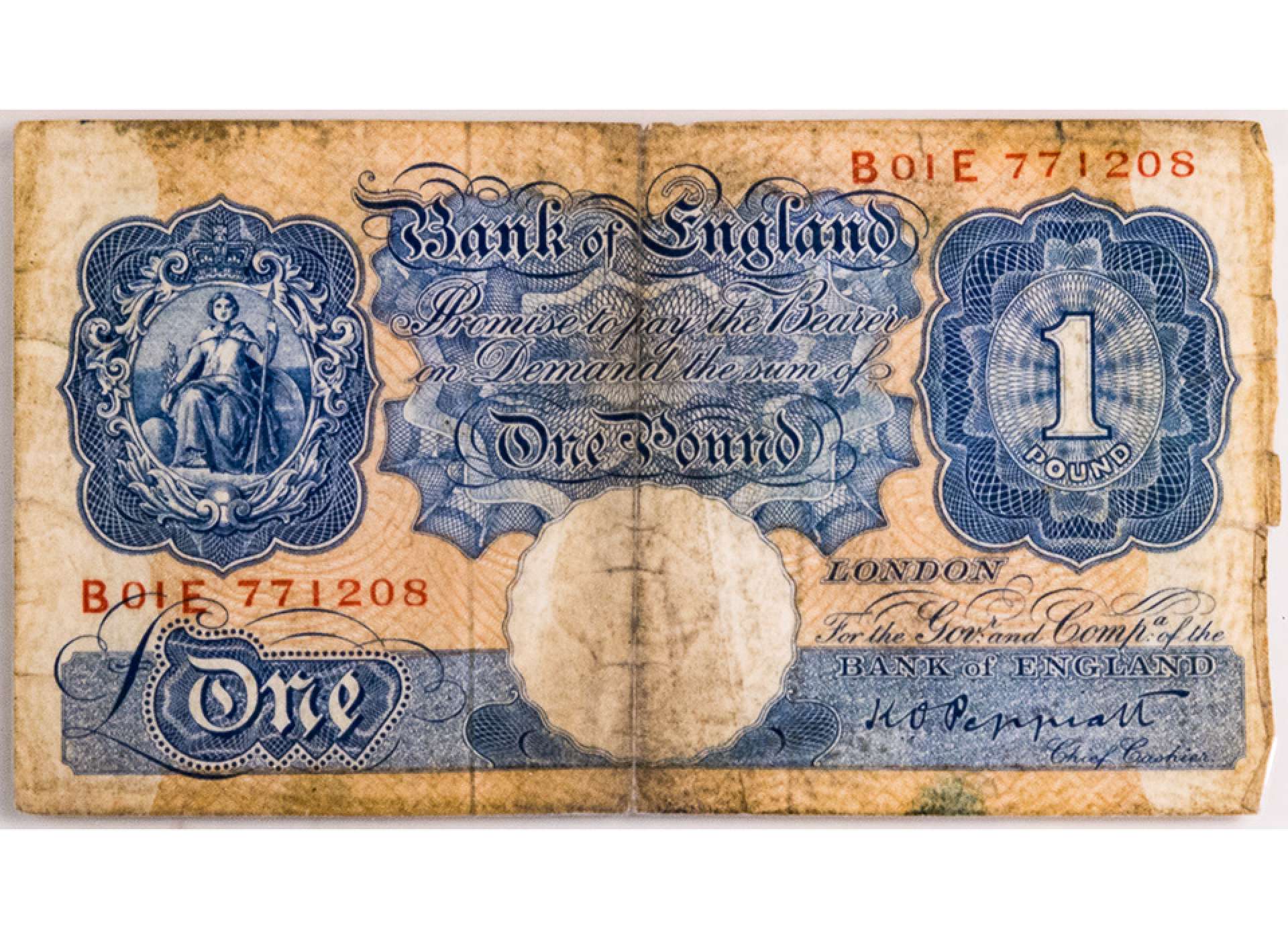
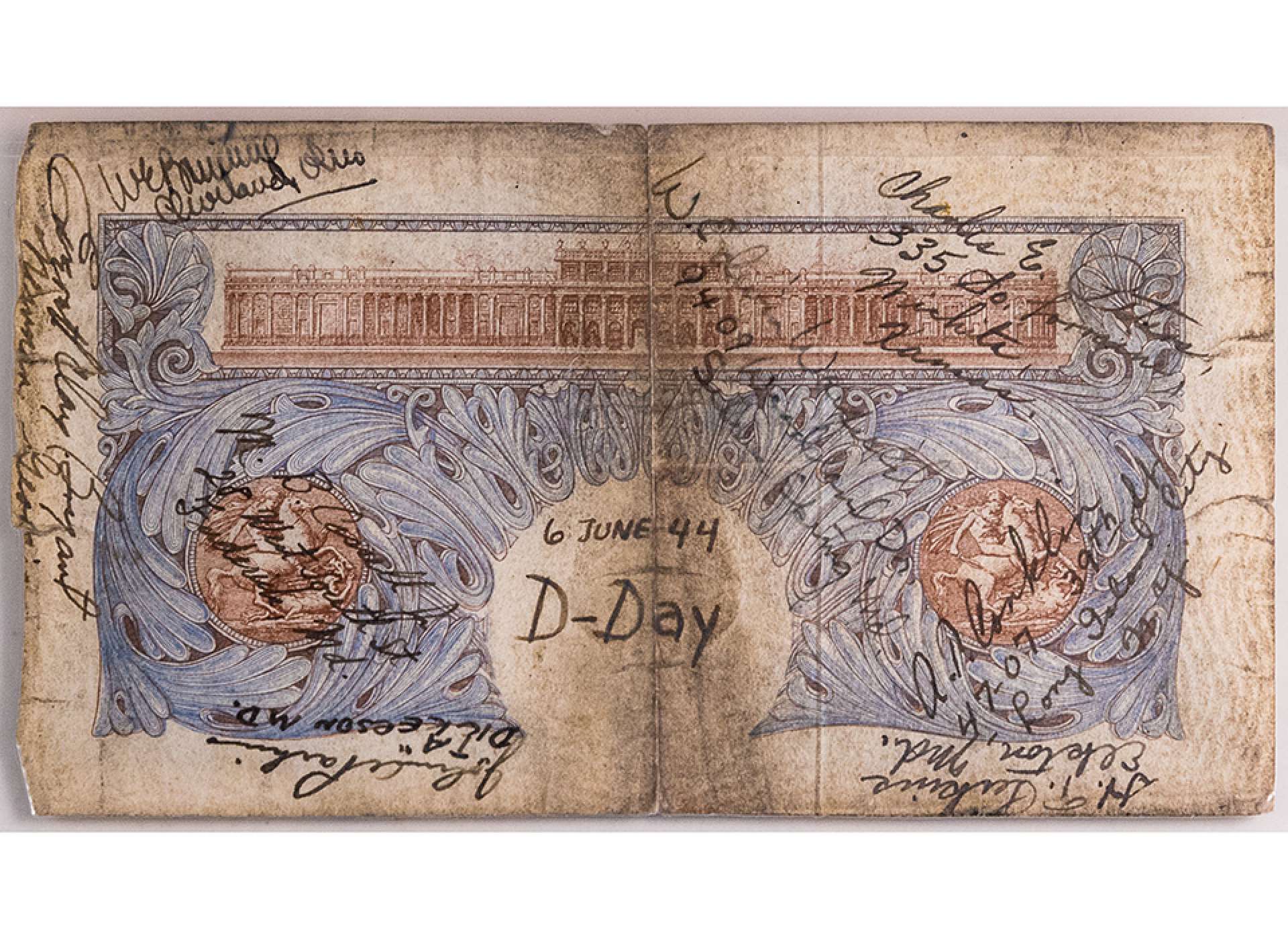
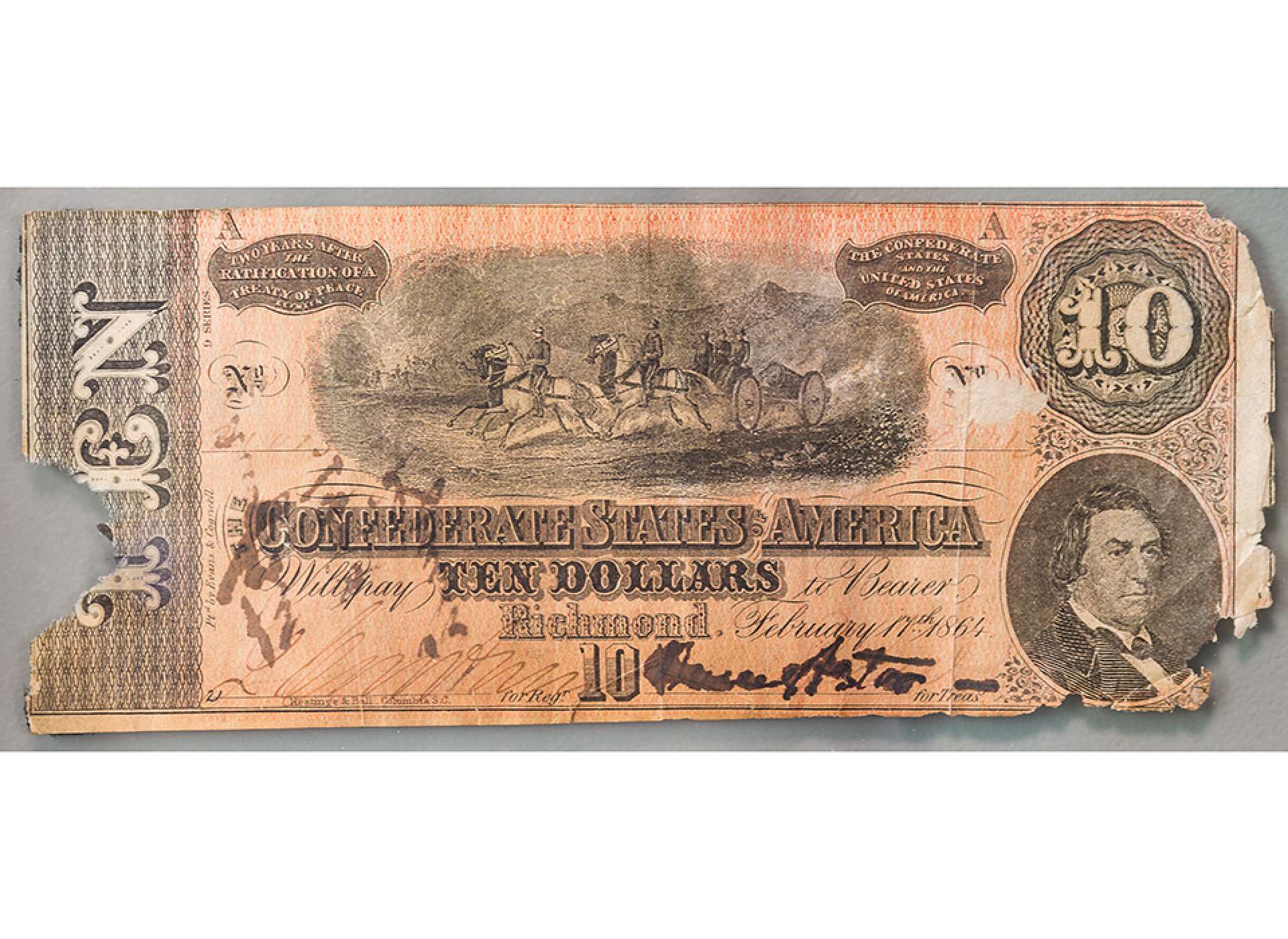




![Max Fuchs, New York City cantor, sings as Rabbi Sydney [sic] Lefkowitz, Richmond, VA, conducts the first Jewish services from Germany.](/sites/default/files/styles/max_650x650/public/2025-10/image1.jpg)



